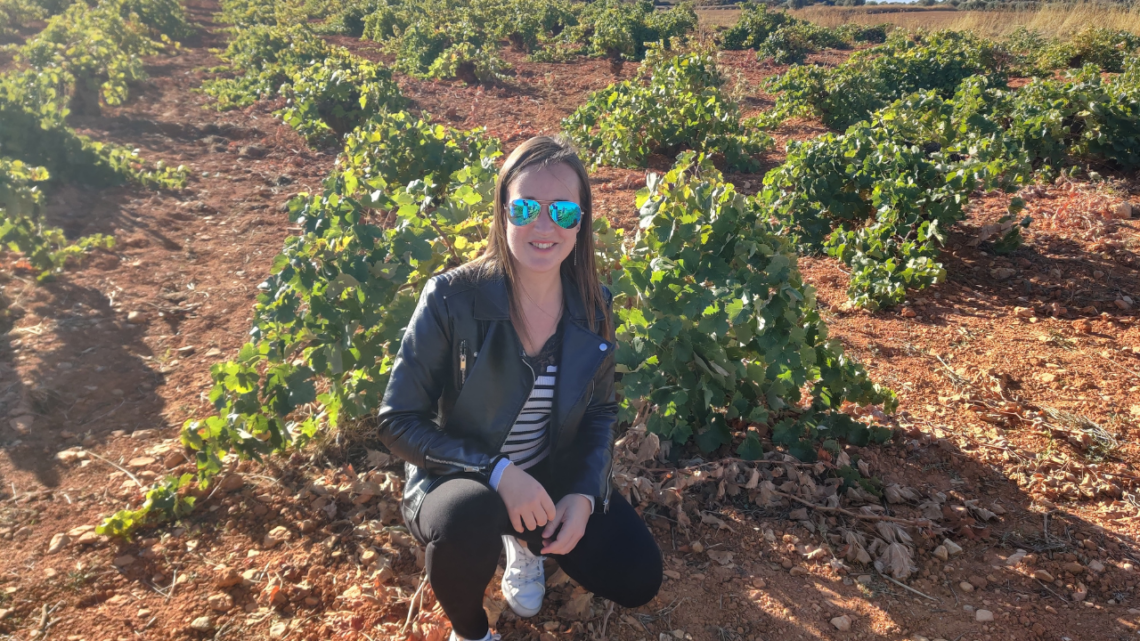
How does soil affect the taste of wine: A Guide for Curious Drinkers
15 minutes read
Ever stared at a wine shelf, wondering why two bottles from the same grape taste so wildly different? The answer lies beneath your feet—literally.
Beneath the surface, where vine roots stretch deep into the earth—sometimes up to 15 meters!—there’s a fascinating world shaping the wine in your glass.
Soil, the silent hero of the vineyard, provides vines with stability, nutrients, and access to essentials like water and minerals.
Together, these elements nurture the vine through its seasons—sprouting in spring, ripening in summer, and resting in winter.
Now, before you roll your eyes and say, “Isn’t soil just dirt?”—hear me out. Knowing what’s beneath the vines is key to understanding why your favorite Sauvignon Blanc has that crisp edge or why you prefer a bold Shiraz over a light Pinot Noir.
And here’s the fun part: exploring soil types doesn’t just deepen your wine knowledge—it can also guide you toward hidden gems outside of France. So grab a glass, and let’s dig deep (pun intended) to see how soil shapes the wines you love (and the ones you’ve yet to discover).
Soil is more than just dirt—it’s the foundation of every glass of wine you enjoy. From water-retentive clay to mineral-rich chalk and smoky volcanic rock, this guide dives into how soil types influence wine’s taste, texture, and character. Whether you’re a fan of crisp whites or bold reds, understanding soil can help you discover wines that match your style—beyond Bordeaux! Don’t miss the easy-to-scan table breaking it all down.
Why soil matters
As the French writer Colette, once said: : «Le vin est l’expression de son terroir » —wine is the expression of its terroir. And a big part of that terroir? The soil.
Grapevines grow in all kinds of soils, from sandy beaches (yes, really!) to rocky mountainsides. Each soil type has its quirks, and tastings have shown that soil doesn’t just sit there looking pretty—it plays a huge role in a wine’s taste, texture, and aroma. Sure, grape variety, ripeness, and winemaking techniques also matter, but today we’re giving soil its moment in the spotlight.
Soil isn’t just “dirt.” It’s the secret sauce of the vineyard. It gives the vine stability, nutrients, and a whole buffet of minerals to snack on. Winemakers don’t fight with their soil; they collaborate with it. Together, they create wines that tell a story about where they come from. Pretty cool, right?
Take Burgundy, for example. In the Côte de Nuits, where Pinot Noir is the diva of the vineyard, wines from different plots—called climats—can taste wildly different. One plot might produce a wine bursting with tannins, while another just down the road leans more floral or even changes the color slightly. It’s all thanks to the soil—and honestly, the monks who figured this out in the 12th century deserve a toast.
Anecdote #1: The Origin of Burgundy’s Climats
Ever wondered where the concept of climats came from? It dates back to the 12th century, when monks in Burgundy noticed that wines from different plots tasted distinct, even though they were all made from the same grape variety, Pinot Noir. Without modern scientific tools, the monks built small brick walls to separate these plots and gave them the name clots, which later evolved into climats. These designated plots still exist today and are central to Burgundy’s identity.
Anecdote #2: Burgundy vs. Oregon
Here’s another fascinating example: both Burgundy and Oregon produce Pinot Noir and share similar climates. However, the wines taste different. Why? Burgundy’s clay-limestone subsoil creates wines with one profile, while Oregon’s volcanic soils impart another. This difference in soil composition highlights just how much soil affects the final product.
What’s in soil ?
By now, we know soil is crucial for the vine and, ultimately, the wine in your glass.
But what exactly is soil?
Spoiler: It’s not just “dirt.” Soil is a blend of water, air, minerals, and organic matter, and what makes it unique is how these elements are proportioned and organized.
To keep things simple, let’s break it down:
- Porosity: Think of porosity as the soil’s ability to let water flow through it. Good porosity means the vine gets the right amount of water—neither a flood nor a drought. It’s like the vine’s personal hydration system, and it depends on the soil’s texture and structure.
- Texture: This is all about particle size. Sandy soils are the biggest particles (and the hottest—perfect for sun-loving vines). Lime soils feel like talc to the touch, while clay soils are sticky and tend to stay cold.
- Structure: If soil texture is about size, structure is about how those particles are arranged. Lumpy soil? Great for deep vine roots. Compact soil? Not so much—it forces roots to stay near the surface, which isn’t ideal.
But soil isn’t just about porosity, texture, or structure. It’s also packed with nutrients that vines need to thrive:
- Organic matter: Found on the surface, it provides the vine with energy.
- Nitrogen: Helps produce the vine’s greenery (leaves and shoots).
- Minerals: Phosphates support root growth and grape ripening, while potassium boosts sap production.
- Trace elements: Iron, for instance, is essential for photosynthesis.
Anecdote: The Soil and Subsoil Connection
French geologist Charles Pomerol once noted that a wine’s personality isn’t just about the bedrock (or subsoil) but also the properties of the soil above it. The vine loves composite soils—those with a mix of components—over uniform soils. That’s why scree slopes, with their varied makeup, are a favorite for grapevines.
Understanding soil gets even more interesting when you realize it has layers.
Beneath the topsoil lies the subsoil, also called bedrock.
While the bedrock is typically homogeneous over large areas, the topsoil above is alive with microorganisms and constantly interacting with the bedrock through chemical and physical changes.
This dynamic relationship is what distributes key nutrients unevenly, giving each vine—and its wine—a unique character.
A little reminder of bedrocks
Good news: there are only three types of bedrocks to remember! Let’s break them down::
Magmatic Rocks: These are formed when magma cools and solidifies. When it happens on the surface, they’re called volcanic rocks; when it happens underground, they’re plutonic rocks. Example? Granite—one of the more famous volcanic rocks.
Sedimentary Rocks: These come from layers of minerals, organic matter, or other rocks that have settled over time. Examples include limestone, clay, sandstone, marl, and sand. Yes, that sandy soil we talked about earlier has a sedimentary origin!
Metamorphic Rocks: These start as magmatic or sedimentary rocks but are transformed by intense pressure and heat. A common example is schist, which forms when sedimentary rocks are pressed into something entirely new
The Relationship Between Soil pH and Wine Acidity
Did you know that the soil’s pH can influence the zing in your glass of wine? It’s true—soil pH plays a key role in shaping a wine’s acidity, which impacts its taste, balance, and even its aging potential. Let’s break it down:
- Alkaline Soils (High pH): Soils rich in calcium carbonate, like limestone, create an environment that neutralizes acidity. Grapes grown here often have naturally high acidity, which gives wines like Chablis’ Chardonnay or Sancerre’s Sauvignon Blanc their crisp, refreshing character. Think of that tangy, mouthwatering sensation that makes these wines so food-friendly!
- Acidic Soils (Low pH): Found in areas with high rainfall, acidic soils can soften a wine’s acidity. While these wines might not have the same sharp freshness, they tend to feel smoother and more approachable—perfect for a cozy dinner with friends.
- The Balancing Act: Soil pH doesn’t just affect acidity; it also influences which nutrients are available to the vine. For instance, alkaline soils can make it harder for vines to absorb iron (important for photosynthesis), while acidic soils might limit calcium uptake. This nutrient balance impacts the vine’s health and, ultimately, the wine’s flavor profile.
Understanding soil pH helps winemakers fine-tune their wines, making wine with just the right amount of refreshing acidity to keep them lively, balanced, and absolutely delicious..
What Soil is Best for Grapes?
The type of soil a vine grows in affects how it accesses water and nutrients, which in turn influences the grapes—and eventually the wine. For example, vines can dig deep, sometimes as far as 15 meters, to find the water they need, depending on the soil’s structure.
Soil also determines what resources the vine extracts, which can directly impact the wine’s flavor. However, not everyone agrees on just how much influence soil chemistry has.
René Morlat, in his book Traité de viticulture de terroir (2010), puts it bluntly: “Apart from rare deficiencies, no significant role seems to be attributed to the chemical factors of soils, such as rocks, in the terroir effect influencing wines. Claims that a wine’s taste comes from mineral elements absorbed by the roots should be questioned.”
So, where’s the truth? Likely somewhere in the middle. The relationship between soil and vine is complex and endlessly fascinating—some, like Lydia and Claude Bourguignon have dedicated their lives to studying it.
What we do know is that soil texture matters. For example:
- Warm soils help grapes ripen faster.
- Water-retaining soils ensure vines stay hydrated during dry spells.
Let’s take a closer look at soil particles and how they pair with different grape varieties.
What is the effect of soil on wine?
Now that we know soil is a critical player in shaping the wine we enjoy, let’s dive into the specifics.
Did you know that the soil type beneath a vineyard can influence everything from the wine’s body to its minerality, acidity, and even its aging potential?
Whether you love a crisp Sauvignon Blanc, a plush Merlot, or a smoky volcanic red, understanding soil types can help you connect the dots between your favorite wine profiles and their origins.
To make things simple, here’s an easy-to-scan table that highlights key soil types, the wines they influence, and the regions where you can find them.
Use this as your cheat sheet to decode the soil behind your next favorite bottle:
1. Water-Retentive Soils
These soils are perfect for wines with freshness, structure, and balance.
| Soil Type | Description | French regions | (Examples of) Foreign Regions | (Examples of) Ideal Grapes | Impact on Wine |
|---|---|---|---|---|---|
| Clay | Dense, water-retentive, slow-draining | Pomerol | Ribera del Duero (Spain)Barossa Valley (Australia) | Merlot, Tempranillo, Shiraz | Full-bodied, robust wines with balanced acidity and concentrated flavors |
| Loess | Fine-grained silt with minerals like quartz, clay, and calcium carbonate | Wachau (Austria), Szekszárd (Hungary), Friuli (Italy) | Grüner Veltliner, Blaufränkisch | Aromatic wines with elegance and balance | |
| Chalk | Porous, light-colored limestone | Champagne, Loire Valley | Southern England, Jerez (Spain) | Chardonnay, Chenin Blanc, Palomino | Crisp wines with vibrant acidity and subtle minerality |
2. Heat-Retentive Soils
Ideal for bolder, fuller-bodied wines from regions with cooler climates.
| Soil Type | Description | French regions | (Examples of) Foreign Regions | (Examples of) Ideal Grapes | Impact on Wine |
|---|---|---|---|---|---|
| Gravel | Well-draining mix of pebbles, sand, and clay | Médoc | Hawke’s Bay (New Zealand), Kakheti (Georgia) | Cabernet Sauvignon, Syrah | Structured, age-worthy wines with intense flavors |
| Sandy | Loose, quick-draining, heat-retaining | Graves | Colares (Portugal), Yamanashi (Japan) | Zinfandel, Albariño, Koshu | Light, aromatic wines with soft textures and lower acidity and tannins. |
| Schist | Flaky, well-draining metamorphic rock | Loire Valley, Roussillon | Priorat (Spain), Douro Valley (Portugal) | Chenin Blanc, Garnacha, Touriga Nacional | Bold, aromatic wines with rich complexity and earthy or spicy undertones. |
3. Mineral-rich soils
Highlight elegance, minerality, and aging potential.
| Soil Type | Description | French regions | (Examples of) Foreign Regions | (Examples of) Ideal Grapes | Impact on Wine |
|---|---|---|---|---|---|
| Limestone | Porous, rich in calcium carbonate | Burgundy, Sancerre | Santorini (Greece), Kakheti (Georgia) | Chardonnay, Sauvignon Blanc, Assyrtiko | Mineral-driven wines with fresh acidity and refined aromas |
| Volcanic | Porous, nutrient-rich basalt or tuff | (N/A) | Mount Etna (Italy), Santorini (Greece), Ikeda (Japan) | Nerello Mascalese, Assyrtiko | Vibrant wines with smoky minerality and refreshing acidity |
| Granite | Mineral-rich rock with low water retention | Beaujolais | Dão (Portugal), Kamptal (Austria) | Gamay, Touriga Nacional, Grüner Veltliner | Elegant, mineral-driven wines with vibrant acidity and concentrated fruit flavors. |
4. Poor-nutrient soils
Known for precision, terroir-driven wines with strong acidity and complexity.
| Soil Type | Description | French regions | (Examples of) Foreign Regions | (Examples of) Ideal Grapes | Impact on Wine |
|---|---|---|---|---|---|
| Slate | Hard, brittle, heat-retaining metamorphic rock | Alsace | Mosel (Germany), Douro Valley (Portugal) | Riesling, Chenin Blanc, Touriga Nacional | Vibrant acidity, steely minerality, and precision; great aging potential. |
| Shale | Fragmented clay and minerals | (N/A) | Nahe Valley (Germany), Loire Valley (France), Douro (Portugal) | Riesling, Chenin Blanc, Touriga Nacional | Complex wines with concentrated flavors, mineral backbone, and bright acidity. |
| Opok | Marl, clay, and silt | (N/A) | Styria (Austria), Slovenia | Sauvignon Blanc, Chardonnay | Elegant, mineral-driven wines with vibrant acidity and clear fruit expression. |
Soil and beyond
Soil Formation and Evolution: The Foundation of Great Wines
The story of soil begins millions of years ago, shaped by the interplay of nature’s forces. From the cooling magma The story of soil begins millions of years ago, shaped by natural forces that continue to evolve it today. From ancient volcanic eruptions to the gradual accumulation of marine life, soil formation is a combination of physical, chemical, and organic processes. Here’s how it works:
- Physical Weathering: This is nature’s way of breaking rocks down. Forces like wind, water, and temperature changes chip away at massive rocks over centuries. Think of granite mountains slowly eroding into sand and clay, which eventually form soils that nurture vines.
- Chemical Weathering: Here, rocks change at the molecular level. For example, limestone originates from fossilized marine skeletons, while volcanic rocks like basalt break down into mineral-rich soils. These transformations add complexity to the soil, making it uniquely suited for certain vines.
- Organic Matter Addition: As plants and animals decompose, they enrich the soil with nutrients, creating a vibrant environment for microbial life. These microorganisms play a crucial role in keeping vines healthy and thriving.
Together, these processes create the diverse soil types we see in vineyards today. From the porous chalk of Champagne to the volcanic soils of Santorini, each type offers a distinct environment for vines to grow—and for wines to develop their unique character.
Terroir: More Than Just Soil
Terroir is the combination of natural and human factors that influence a wine’s character. It includes:
- Climate: Temperature, sunlight, and rainfall determine how grapes ripen. Cooler climates like Burgundy result in wines with higher acidity and finesse, while warmer climates produce riper, fuller-bodied wines.
- Topography: Elevation, slope, and orientation to the sun impact vine growth. For example, south-facing slopes in the Northern Hemisphere get more sunlight, helping grapes ripen in cooler areas.
- Soil: Soil affects water drainage, root depth, and nutrient uptake, all of which influence the vine’s growth and the wine’s flavor.
- Human Influence: From the monks in Burgundy mapping climats to modern winemakers refining techniques, human decisions are a key part of terroir.
Understanding terroir helps explain why wines from the same grape can taste so different depending on where they’re grown.
Conclusion : What is the effect of soil on wine?
So, does soil really matter? Absolutely. It’s not just where vines grow—it’s part of what makes each wine unique.
Think about it: the same grape can taste completely different depending on the soil it’s grown in. That’s why a Grüner Veltliner from loess soils in Austria can feel fresh and aromatic, while one from granite might lean toward precision and minerality.
For you, it’s less about memorizing soil types and more about understanding how they connect to what you enjoy in a wine. Like acidity and freshness? Chalky soils are your friend. Prefer bold and rich? Maybe it’s time to explore clay or gravel-grown reds.
So, next time you’re exploring wines, think about what’s under the vines.
Whether you love fresh, zippy whites or bold, earthy reds, understanding soil can guide you to new favorites. Why not start by trying something outside France?
Look for a chalky English sparkling wine, a mineral-packed Japanese Riesling, or a volcanic Assyrtiko from Greece. Let your glass take you somewhere unexpected—because wine is all about the journey.
At the end of the day, soil is just one piece of the puzzle. Climate, vintage, and winemaking choices all play their part too. But knowing a little about what’s beneath the vines can add a whole new layer to how you choose and enjoy your wines.
And isn’t that what this journey is all about—finding what speaks to you in the glass?
A Quick Tour of Soil Types
- Clay: Great for early-ripening varieties like Merlot, producing rich, full-bodied wines.
- Limestone: Adds minerality and freshness, perfect for Chardonnay or Pinot Noir.
- Gravel: Ideal for Cabernet Sauvignon, promoting drainage and balanced ripening.
- Sandy Soils: Lighter, aromatic wines thrive here, like Albariño or Zinfandel.
- Volcanic: Wines with refreshing acidity and smoky minerality shine, such as Etna’s Nerello Mascalese.
- Slate and Schist: Think minerality, acidity, and age-worthy wines like Mosel Rieslings or Priorat reds.
Where to next?
The Impact of Terroir on Grüner Veltliner Production
Discover how Austria’s diverse soils—from loess to granite—shape the flavor profiles of Grüner Veltliner, the country’s signature white wine. This post unpacks the connection between terroir and the vibrant, peppery character of this beloved varietal.
Blaufränkisch: The Impact of Climate on Flavor Profiles in Burgenland
Explore how Burgenland’s unique microclimates influence the bold flavors and elegant structure of Blaufränkisch. From sunny slopes to cooling lake breezes, learn how climate shapes Austria’s iconic red wine.
Exploring the Terroir of Burgenland for Blaufränkisch
Dive into the soils of Burgenland and uncover how clay, gravel, and limestone give Blaufränkisch its depth and complexity. This post breaks down the region’s terroir and its role in crafting unforgettable wines.





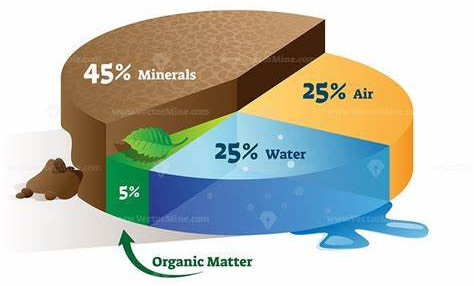
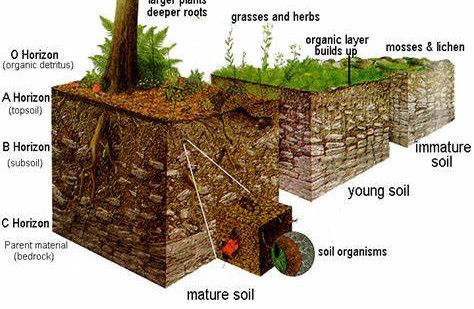
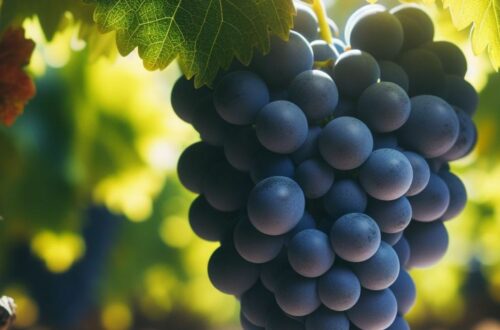
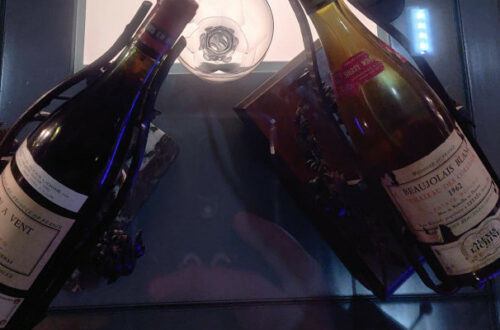
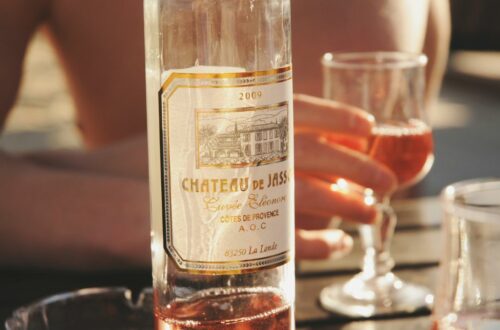
5 Comments
Dominic356
first and foremost let me start with the obvious thing, I mean the most obvious. you really look like a seasoned blogger. I like the way you chose the output of those letters. They are now special because we do not see them much anymore. This is so mind-blowing. Any way I drink, I do. This article has opened my eyes because I thought that all wines are the same. well, all wines may not be the same because of the soil. I will drink a little wine for the sake of my stomach.
Mademoiselle
wine is good for the heart (and for the morale!) Thank you for the compliments and glad I could help you out. If you really want to “taste” the soil, choose a grape variety and drink wines issued from this variety grow in different countries and you will definitely understand the impact of soil
Dominic
A little wine every day does not hurt.
Jerry McCoy
I learned years ago when I was stationed in Germany that the soil has a direct impact on the flavor of the wine. It was explained to me that when there is a drought growers prefer the clay soils because they retained the water longer and the grapes grew better, especially in the summer. They would select certain sections to harvest first because of the size and flavor of the grape. I would assume this would be true in France as well. Both countries have wineries that are several hundred years old.
Jerry
Mademoiselle
Hello Jerry! First, thank you for reading the article and leaving your thoughts. You are completely right! Seems you are very knowledgeable.
thank you for stopping by and I hope you signed up to the newsletter, no doubt, you’ll find some very useful tips